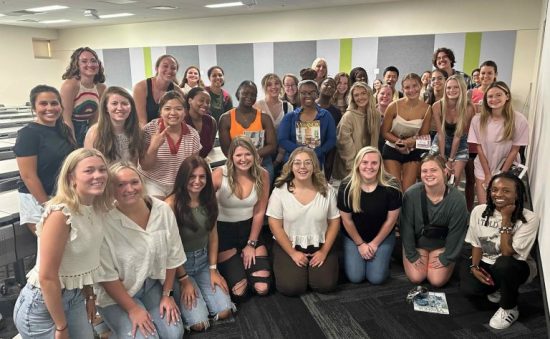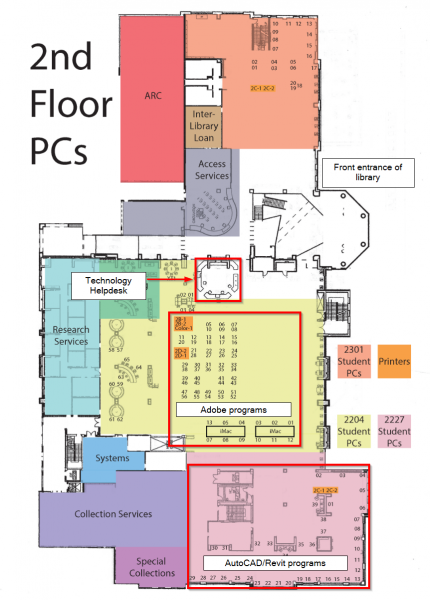Resources
Apply for the $10,000 Norm Zimmer Scholarship and/or our $5,000 Emerging Black Architects Scholarship.
Apply now to Our Scholarships | ZGF. Please direct any questions regarding either scholarship to our website or to my attention (Josh Crowell) at scholarship@zgf.com.
Betty Lane Family and Consumer Science Scholarship
In 1949, Betty Lane graduated from Georgia College and State University. Lane then obtained two more degrees from the University of Georgia and Florida State University, finally earning her doctorate. Lane joined the Georgia Southern family in 1958 as an assistant professor and devoted herself to the university. She retired in 1986 as the chair of the Department of Family and Consumer Sciences in 1986. Nearly thirty-five years after her retirement, Dr. Lane still stays active on campus and is an avid supporter of student activities and scholarships. This scholarship in her honor is available to students majoring in Human Development and Family Science, Interior Design, or Fashion Merchandising and Apparel Design.
Home Builders Association of Statesboro Scholarship – Interior Design
The Home Builders Association of Statesboro was created in 1968 as an amalgamation of builders, suppliers, and enthusiasts. The goal of the organization is to provide first-rate housing to Bulloch County and to provide scholarships to future architects and interior designers. The Home Builders Association of Statesboro has contribution to Georgia Southern University in the form of scholarships since 1979. This scholarship is available to students majoring in Interior Design.
More Scholarships How to ApplyProfessional Organizations
For a more in-depth understanding of the chosen interior design profession, a student should take time to familiarize themselves with other components outside of the academic community. Several of these organizations offer student membership and a variety of benefits to expand the students knowledge and professional network.
- ASID, American Society of Interior Designers
- ASID Georgia Chapter
- IIDA, the International Interior Design Association
- NCIDQ, the National Council for Interior Design Qualification
- NEWH, the Hospitality Industry Network
- NKBA, the National Kitchen and Bath Association
Interior Design Association

IDA functions to promote the Interior Design major at Georgia Southern University, to provide professional development and networking opportunities for current interior design students and alumni, and to offer opportunities for continuing education for the program’s alumni.
The Interior Design Association at Georgia Southern is a recognized student organization of the American Society of Interior Designers (ASID) and the International Interior Design Association (IIDA).
Membership: Open to students with an interest in Interior Design.
Meetings: Monthly in IAB 2028
Advisor Contacts
Naghmeh Hachempour nhachempour@georgiasouthern.edu
Additional Club Information (login required)
Instagram: gsu.ida
Interior design majors should contact the CBSS Advisement Center for advisement.
CBSS Advisement Center
Carroll Building, Suite 2244
P.O. Box 8004
Statesboro, Georgia 30460
Phone: 912-478-6901
Human Ecology (A-L)
 Clare Ursillo
Clare Ursillo
Carroll Building 2248
912-478-6901
cursillo@georgiasouthern.edu
Human Ecology (M-Z)
 Carson Beauman
Carson Beauman
Carroll Building 2224
912-478-6901
cstepanek@georgiasouthern.edu
About the Honors College: “We provide an enhanced educational environment for bright and motivated students who seek a distinctive and challenging undergraduate experience. The Program is designed as a “college within a college” where students have access to smaller classes and enriching seminars and, at the same time, enjoy the opportunities provided by a large, complex, comprehensive university.” (https://academics.georgiasouthern.edu/honors/about/)
This is a very unique program here at Georgia Southern that helps set our students apart from their peers by having them engage in research and peer learning where they work alongside of a faculty mentor in an area of specialization of their choice.
The interior design practicum or internship is completed between your junior and senior years. It is a course required for graduation from the interior design program. This is a work-study course supervised by the site coordinator. The student should be able to apply the knowledge learned from classes to real-life situations. The internship site must meet certain criteria and be approved by faculty before the student may start.
Students use internal website for access to scholarship, and other resources.
NCIDQ Workflow diagram Internship Brochure to share with site Site Supervisor Workflow DiagramGeneral Student Resources
The links below will connect you with support staff and other resources that may prove valuable during your time as a student at Georgia Southern.
- CBSS Advisement Center
- Campus Computer Labs
- Counseling Center
- Campus Recreation and Intramurals
- Dean of Students Office
- Library Resources for Students
- Office of Career and Professional Development
- Office of Inclusive Excellence
- Student Accessibility Resource Center
- Student Code of Conduct
- Student Employment
- The Writing Center
Library Resources for Interior Design Students
The 2nd floor of the Library has dedicated computer stations for us. Note the pink AutoCAD/Revit dedicated computers and the Adobe only area in yellow.
Many of our books are in the NA and NK areas. The website can be found on myGeorgiaSouthern under Library Resources.

Interior Design Lab
Please see these lab times for getting assistance in the lab, including access to the print lab. This can be time to help with your assignments, technology support, printing, or other related work.
Books
The largest investment students make in books should be retained for use in future classes and professional life. The majority of the books used in the Interior Design Program are not college textbooks, but rather professional reference resources that are used throughout an interior design career and helpful for studying for the NCIDQ exam. See the NCIDQ website for more details. As such, students need to purchase their INDS textbooks and should not sell them back at the end of the semester. Textbooks are also repeatedly used in courses to minimize cost. Open resource materials are used when available as well.
Supplies
Purchase of supplies and materials is required to support skill development. It is necessary for students to make an initial investment (~ $400.00) in the first semester of the program that will be used throughout the program and required. Each course will provide a list to the student with required supplies.
Similar to the textbooks, many of the tools and much of the equipment purchased for design and art foundation courses will last a lifetime if properly cared for. Students should be aware, however, that some relatively expensive supplies, such as rendering markers and pencils, vellum, plotter paper, etc, can become a financial burden if not used and cared for thoughtfully.
Required supplies include but are not limited to:
- Georgia Southern University Drafting Kit
- specialized paper
- color ink cartridges
- presentation materials
- outsourced printing costs
- samples
- field trips
Students will be notified in advance if special costs are associated with a course or project.
Technology
The software utilized throughout the Interior Design Program requires computers with above average speed and memory. While computer labs are available for students to work on assignments, the time and accessibility of the labs varies. For students who commute to school or those who prefer to work from home in a more controlled environment, we recommend purchasing a personal computer/laptop. This is becoming essential with the current environment where events like hurricanes can require working remotely.
Not all computing and printing expenses encountered through the program are covered by Georgia Southern’s student technology fee, primarily because they result from specialized programs and equipment used only by the interior design department, and do not benefit the student population as a whole. The specialized technology required cannot be covered by the student technology fee.
Computer Hardware
Specifications
- Laptop & OS: PC with Windows 10 OS
- Screen Size: 15” Display or larger
- CPU: Multicore Intel i5 or higher series processor or AMD equivalent, highest affordable CPU speed rating recommended (Revit and other software use multiple cores), CPUMark of 2000 or higher preferred, e.g. 2.6 GHz Intel 6 Core Ninth- generation i7 Processor.
- Memory (RAM): 16 GB RAM or more, 64 GB or more optimal.
- Hard Drive: SATA3 SSD or HDD, largest you can afford. SATA3 SSD or NVME m.2 Hard Drive optimal. 40 GB free space.
- Graphics Card: 4 GB or more, 11 GB or more optimal. (The best you can afford, discrete graphic card preferred). GPU scoring a G3DMark of 7,000 or higher with up-to-date drivers with 20,000 or higher optimal. (Such as the Nvidia GeForce GTX 1650, Quadro K6000, AMD Radeon RX 470 or better)
- Accessories:
- *1TB external hard drive also required for use with the lab computers during class.
- Optional security cable (please note that this is not compatible with all models)
- External mouse for laptop (touchpads are hard to draft with)
Minimum examples:
- Dell G5 15 with GTX 1650
- Inspiron 14 Plus with RTX 3050
- Dell Precision workstation with Quadro A1000
Recommended examples:
- Dell G15 gaming with RTX 3060 or greater
- Alienware M15 with RTX 3070 or greater
- Dell Precision workstation with Quadro A2000 or greater
Computer Software
Laptop: Windows
- Adobe Creative Cloud
- Microsoft Office
- SketchUp
- Autodesk: AutoCAD, Revit, 3DS Max SketchUp PlugIn
- Enscape
- Anti-virus software (such as Norton Internet Security)
Some software used in the academic programs for Interior Design will only run on the Windows Operating System. We highly recommend running Windows on a PC. Although it is possible to run the Windows Operating System on a MacBook (via either BootCamp or Parallels), we cannot guarantee you will be able to run the software without difficulty. The upgraded MacBook Pro that we normally recommend for Interior Design uses a discrete graphics card that has not been validated by the various software companies. This means that they will not guarantee that the graphics card will be able to run software without problems.
Georgia Southern University Store Tech Corner
Basic technology help is available via the Georgia Southern Technology Help Line. Additionally, Tech Corner offers various free technology services to students. The Interior Design Program does not offer IT/technical support for student-owned laptops or devices
Contact Information:
phone: 912-478-7744
email: techcorner@georgiasouthern.edu
CIDA Professional Standards
The Interior Design Program leading to the Bachelor of Science Degree in Interior Design, is accredited by the Council for Interior Design Accreditation, 206 Grandville Avenue, Suite 350, Grand Rapids, MI, 49503. Georgia Southern University has held accreditation by the Council for Interior Design Accreditation (CIDA, formerly FIDER) since 2000. We have been reaccredited through 2029. “Achieving accreditation is a strong signal of a program’s commitment to delivering a quality professional-level education that prepares students for entry-level interior design practice” (CIDA).
The Interior Design Program is also accredited by the National Association of Schools of Art and Design (NASAD). We are also an affiliated school with the National Kitchen and Bath Association.
Please visit the CIDA website for more information.
Read more about CIDA accreditation standards
There are sixteen CIDA standards divided into four sections. In order to be accredited, a program must comply or partially comply with all sixteen standards. Compliance with standards is measured by student learning and program expectations. Judgment of compliance is based on the expertise of experienced peer evaluators and precedent in accreditation. The program complies with eligibility requirements through its accreditation by the Southern Association of Colleges and Schools (recognized by the U.S. Department of Education) to award associate degrees. CIDA brings professionalism and quality to interior design programs by identifying, developing and promoting quality standards for the education of entry-level interior designers. As a leader in the interior design profession, the Council is the primary accrediting agency for interior design education, leading the profession to excellence by setting standards and evaluating academic programs in interior design.
The CIDA accredited program prepares students for entry-level interior design practice, for advanced study, and to apply for membership in professional interior design organizations. The first Bachelor of Science Degree in Interior Design granted by Georgia Southern University meets the educational requirements for eligibility to sit for the National Council for Interior Design Qualification Examination (NCIDQ Exam). For more information about NCIDQ Exam eligibility visit: https://www.cidq.org/eligibility-requirements.
There are over 150 programs accredited under The Council for Interior Design Accreditation Professional Standards. We are one of the six accredited programs in Georgia; one of only two public institutions and the only accredited institution in southern Georgia. Our recent process for reaccreditation is explained here:
“Programs seeking CIDA accreditation voluntarily place themselves before the scrutiny of the interior design profession by participating in a rigorous peer review process. This process requires interior design programs to conduct a thorough self-evaluation of compliance with CIDA Professional Standards and report results to CIDA. The program must also organize an extensive display of student work for CIDA’s review and host a three-member team of CIDA peer evaluators for an on-site assessment of compliance with CIDA Professional Standards. A report of the findings from this on-site evaluation as well as follow-up dialogue with the program forms the basis for a final decision on accreditation by CIDA’s Accreditation Commission.” (https://www.accredit-id.org/announcements/kps65mspnvonw0b887lzpby87hgmun.)
Student Achievement Data
Georgia Southern University, Interior Design Program, Bachelor of Science
It typically takes a full-time student taking approximately 15 credits per semester (15-18 credits) and four years to complete the degree program.
The following data was collected using institutional records, two exit surveys (administered by the program and GS), and an alumni survey administered by the program.
Student Attrition, Retention and Graduation
Retention: 85.7% students admitted into Studio I in the spring of 2022 (30 of 35) returned in the fall of 2022 putting attrition at 14.3%. For seniors, students returning from Studio IV to Studio V in the spring of 2022 were 100%.
Of the students graduating in academic year 2021/22, 98% (n=56) graduated in 4 years or less from starting in the program. This includes one double-major who needed extended time.
Acceptance into Graduate Programs
Two out of 26 students in 2020 applied to graduate school and both were accepted. Thus, 7% of students who graduated in 2020 applied for graduate school, and of those 100% were accepted.
Zero students have entered graduate school in 2021 or 2022.
Job Placement Rates
As of Fall 2022
- 2018: 100% of the 21 students who graduated in 2018 are employed in interior design or a related profession.
- 2019: 96% of the 23 students who graduated in 2019 are employed in interior design or a related profession.
- 2020: 97% of the 29 students who graduated in 2020 are employed. Two are not in interior design or a related profession.
- 2021: 97% of the 34 students who graduated in 2021 are employed. Two are not in interior design or a related profession.
*data current as of 11/7/2022
Student Learning Outcomes
The professional interior designer:
- analyzes the client’s needs, goals, and life safety requirements
- integrates findings with research and knowledge of interior design
- formulates preliminary design concepts that are aesthetic, appropriate, and functional and in accordance with codes and standards
- develops and presents final design recommendations through appropriate presentation media
- understands and designs for sustainability (for more see the Sustainable Development Goals)
- prepares working drawings and specifications for non-load bearing interior construction, reflected ceiling plans, lighting, interior detailing, materials, finishes, space planning, furnishings, fixtures, and equipment in compliance with universal accessibility guidelines and all applicable codes
- collaborates with professional services of other licensed practitioners in the technical areas of mechanical, electrical, and load-bearing design as required for regulatory approval
- prepares and administers bids and contract documents as the client’s agent
- reviews and evaluates design solutions during implementation and upon completion
The State of Georgia has title act legislation. To identify oneself as a registered or licensed interior designer in the State of Georgia, interior designers must provide proof of a minimum of a four-year program or post-professional degree from a college or university with a program accredited by CIDA (Council of Interior Design Accreditation), NASAD (National Association of Schols of art and Design) or NAAB (National Architectural Accrediting Board) in addition to passing the NCIDQ exam. See the Georgia Secretary of State website for professional licensing information.
Federal Law requires colleges and universities to make certain disclosures to prospective students of these programs. These disclosures include information on the University’s authority to operate outside of Georgia, the complaint processes, adverse actions, refunds, and program closure.
The School of Human Ecology has determined that the required classes and educational activities of this academic program will qualify a graduate of this program to take the NCIDQ certification exam. This exam is required to be licensed as an interior designer in the U.S. states and territories that require a license. A license is not required in AK, AZ, CO, DE, HI, ID, KS, MA, MI, MT, NH, ND, OH, OR, PA, RI, SC, SD, VT, WA, WV, WY, GU or VI. The program can also prepare you to take the IDEX California exam, which is required for licensure in California. It is not yet determined if our program meets the licensure requirements in NE, NM, or WI. Georgia Southern makes every effort to ensure information about educational requirements for licensure or certification is current; however, state requirements may change. Separate from educational requirements, state licensure boards may require applicants to complete professional examinations, background checks, years of professional experience, residence requirements, jurisprudence exams, training, etc. If you are planning to pursue professional licensure or certification in a state other than Georgia, it is strongly recommended that you contact the appropriate licensing entity in that state to seek information regarding licensure or certification requirements before beginning an academic program. For more information, including assistance if you are located in or seeking licensure in NE, NM, or WI, as well as for a list of applicable state boards, visit the Georgia Southern State Authorization and Professional Licensure Webpage.


